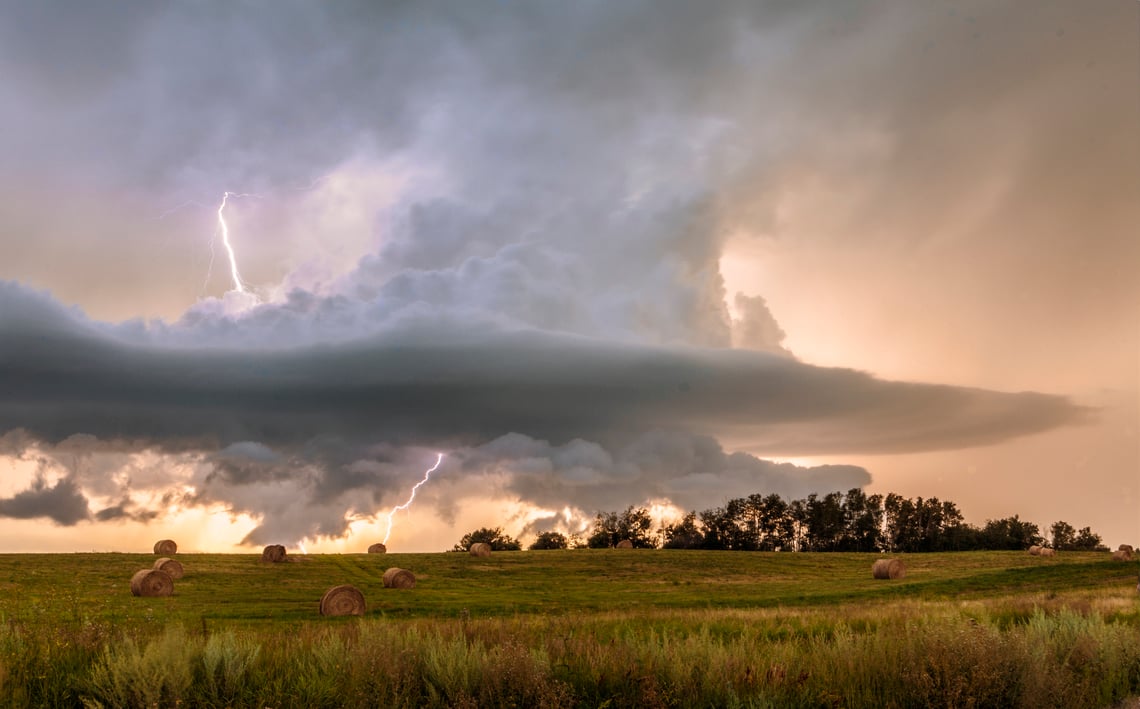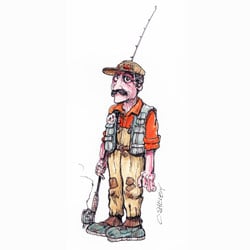Late summer is prime thunderstorm season here in the South. Whether you're hiking, boating, fishing, farming, or hunting an ounce of prevention is worth a pound of cure when it comes to lightning safety. Learn the two broad principles of lightning safety and how and when to apply them here.
Most of us move to rural areas to better enjoy the outdoors. Along with the experience come a few things we should stay mindful of and one of those is lightning.
I was reminded of this while hiking in the Congaree National Park. We were just beginning a late-morning hike when the stillness was disrupted by thunder. I glanced over to my right where an old, dead tree that had obviously been the victim of a lightning strike stood as a charred reminder. We made a quick turnaround not wanting to test the old myth of lightning striking twice.
While we are on the subject of old myths, let’s put to rest the one about lightning not striking the same place twice. Accuweather reports on their website that the Empire State Building is struck an average of 25 times per year.
Lightning safety boils down to two broad principles.
First, avoid the storm if you can. Second, adjust to the safest place if you can’t.
Starting first with avoidance, it pays to check the weather before you go. We know that summer is the most prevalent season for thunderstorms. Boater Magazine notes that in Florida, most areas will have 70-80 thunderstorms per year. It’s also worth noting, they add, that 70 percent of these occur between noon and six p.m. So you can reduce your chances of being caught out in a storm by going early.
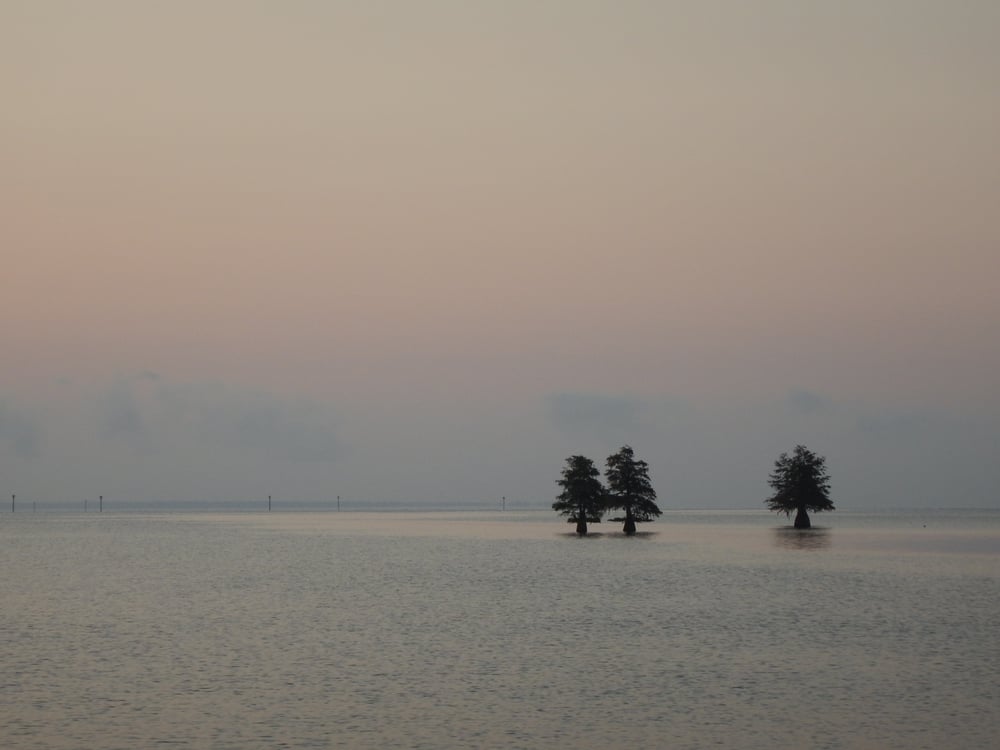
Regarding the second principle, adjusting to the safest place possible, it depends on where you are and what choices you have.
If you can make it to shelter before the storm hits, that’s the best solution. You can judge the distance from the storm, according to the U.S. Coast Guard, by counting the seconds between the lightning flash and the sound of thunder, then dividing by five. The result will be the distance in miles you are from the lightning.
But most experts add that if you can hear thunder, you are already within striking range of the storm.
If you can make shelter, know that all buildings are not created equal
The best are totally enclosed. Open buildings such as sheds, gazebos, or tents are not considered safe. Also, avoid concrete slabs as these tend to have wire running through them which can also conduct electricity.
Should you be on the water and unable to make it back to shore, the U.S. Coast Guard recommends finding a protected area and dropping anchor. If your boat has a cabin, seek shelter inside. If your boat is open, stay as low in the boat as possible and avoid metal and wired electronics during the storm. Also, remember to lower anything you can such as rods or antennas.
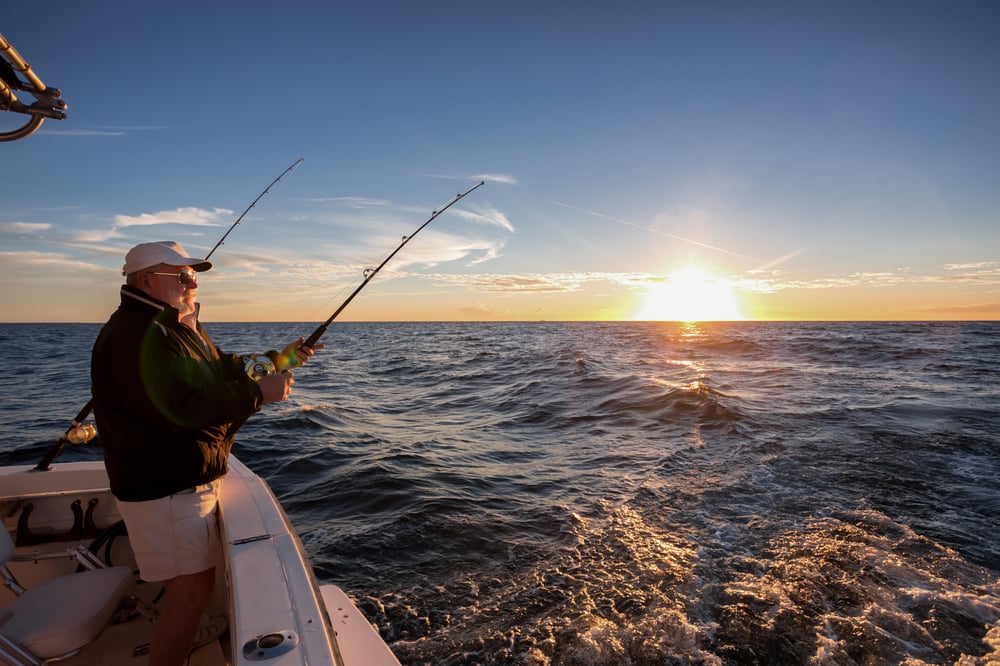
Hikers are also routinely caught in storms and have options to reduce their risk
The goal is to avoid high places or being near taller objects that might be struck. So moving off mountain peaks or ridge lines can help. In general, simply walking downhill can reduce your risk.
If you are in the woods or a place with shrubs, seek an area that is uniform in height with no single tallest tree or object. Also, moving into a depression will reduce your elevation as well.
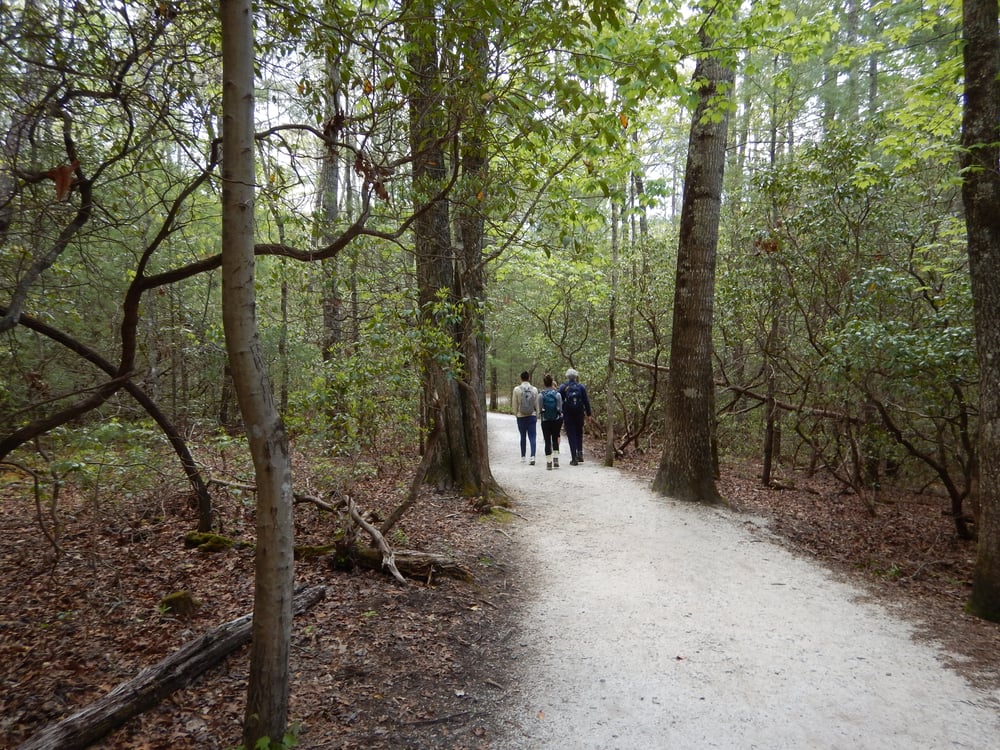
As the storm passes, it’s best to crouch on the balls of your feet with your head lowered. Don’t lie flat on the ground as this increases your exposure to a ground strike.
Thunderstorms are just one of those natural occurrences outdoor lovers learn to adjust to. That day in the Congaree National Park when I was nearly caught outdoors in a storm, I did beat it back to the truck but on the drive out got to see where the lightning struck. The scene convinced me that I’d made a prudent decision to hike another day.


